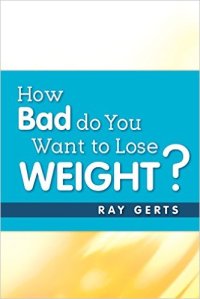Originally publish on HealthDay, this article tells about the dangers of too much sitting, a typical problem that office workers have, but they're not the only ones today. Road truck drivers, some factory workers, even some instructor have to spend there days in front of a computer screen and they do that sitting.
Medical science knows more today about why we have health problems, and pills don't do much good. The truth is we don't eat the right foods, we smoke, we drink alcohol, and we aren't active enough. Doctors will suggest that you cut back on all your vices, but they're afraid to tell you the truth because no one wants to be accussed of a bad "bedside manor". They lose patients like that.
Regular exercise doesn't erase the higher risk of serious illness or premature death that comes from sitting too much each day, a new review reveals.
Combing through 47 prior studies, Canadian researchers found that prolonged daily sitting was linked to significantly higher odds of heart disease, diabetes, cancer and dying.
"We found the association relatively consistent across all diseases. A pretty strong case can be made that sedentary behavior and sitting is probably linked with these diseases," said study author Aviroop Biswas, a Ph.D. candidate at Toronto Rehabilitation Institute-University Health Network.
"We found the association relatively consistent across all diseases. A pretty strong case can be made that sedentary behavior and sitting is probably linked with these diseases," said study author Aviroop Biswas, a Ph.D. candidate at Toronto Rehabilitation Institute-University Health Network.
"When we're standing, certain muscles in our body are working very hard to keep us upright," added Biswas, offering one theory about why sitting is detrimental. "Once we sit for a long time . . . our metabolism is not as functional, and the inactivity is associated with a lot of negative effects."
About 3.2 million people die each year because they are not active enough, according to the World Health Organization, making physical inactivity the fourth leading risk factor for mortality worldwide.
Among the studies reviewed by Biswas and his team, the definition of prolonged sitting ranged from eight hours a day to 12 hours or more. Sitting, or sedentary activities ubiquitous with sitting such as driving, using the computer or watching TV, shouldn't comprise more than four to five hours of a person's day, Biswas said, citing guidelines issued by Public Health Agency of Canada.
"We found that exercise is very good, but it's what we do across our day," he said. "Exercise is just one hour in our day, if we're diligent; we need to do something when we're not otherwise exercising, like finding excuses to move around, take the stairs, or carry groceries rather than use the [shopping cart] at the supermarket."
The biggest health hazard stemming from prolonged sitting, according to the review, was a 90 percent higher risk of developing type 2 diabetes. Among studies examining cancer incidence and deaths, significant links were specifically noted between sedentary behavior and breast, colon, uterine and ovarian cancers.
One study in the review showed that fewer than eight hours of sitting time per day was associated with a 14 percent lower risk of potentially preventable hospitalization.
Dr. Joshua Septimus, a clinical associate professor of internal medicine at Houston Methodist Hospital in Texas, praised the new research, saying it "gives us more data to help counsel our patients."
"The idea that we could exercise for 15 or 20 minutes a day and that could completely erase any harms of a sedentary lifestyle for the other 23 hours a day is just too hopeful," Septimus noted. "This showed us that yes, there is some benefit to physical activity . . . but it's not enough."
Biswas and his colleagues offered additional tips to reduce sedentary time, including:
- Taking a one- to three-minute break every half-hour during the day to stand (which burns twice as many calories as sitting) or walk around,
- Standing or exercising while watching TV,
- Gradually reducing daily sitting time by 15 to 20 minutes per day, aiming for two to three fewer sedentary hours over a 12-hour day.
When you sit after a while, your metabolism will slow-down and other body functions will start to do the same thing. As your body functions slow down you become a target for disease and illness from others you come in contact with. It seems like prolong sitting will put the body into a state of hibernation almost like your sleeping. Doing more work while your standing will keep the body fully functioning. Sitting should only be done for short periods of time.
Think about a stand up desk that you can use part of the day. Think about taking short breaks often just to walk around the room for a few minutes. Even standing is better for your health than sitting.
If you really want to lose the extra flab you can get help, I write 4 blogs and I’ve written two E-books. Read some of my other blog posts.
gettingtoahealthyweight.blog
E-books are the easiest and cheapest way to learn about any subject without groping through hundreds of websites looking for the material you want.
My first e-book is “HowBadDoYouWantToLoseWeight” and it sells for $2.99 on most online bookstores like Amazon.com, BN.com, iBook, Kobo.com, Scribd.com, and Gardner books in the U.K.
My second e-book is available in the same stores. And on smashwords.com. If you use the Smashwords' promotional code You can get my second book for $1.99 (TL96R). Just type in the search line “getting to a healthy weight”.

/about/GettyImages-165562928-567adfe63df78ccc15555c85.jpg)
/about/GettyImages-91559463-567ae03a3df78ccc15555ca1.jpg)
/about/GettyImages-172674777-567ae1463df78ccc15555d4a.jpg)
/about/GettyImages-155358161-567ae1895f9b586a9e8c05b8.jpg)
/about/GettyImages-184302084-567ae2765f9b586a9e8c0638.jpg)
/about/GettyImages-AA026368-567ae37b5f9b586a9e8c133f.jpg)
/about/GettyImages-532878345-56a5b7a55f9b58b7d0de1a15.jpg)





